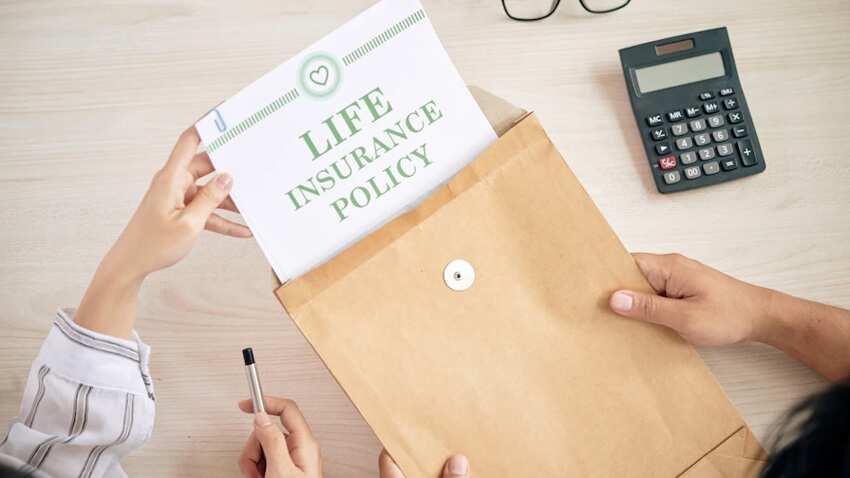Many choose to refinance a mortgage to lower monthly payments, pay off the loan faster or tap home equity for cash. Homeowners usually think of refinancing when interest rates are sinking or stable — and the current environment has been anything but. Still, swapping your old home loan for a new one could make financial sense for you.
Should I refinance my mortgage?
When deciding if refinancing is right for you, consider current mortgage rates. The math isn’t as simple as comparing the interest rate you locked in when you were approved for your mortgage versus the rate you can qualify for now. Review this trio of factors from Bill Packer, chief operating officer of reverse mortgage lender Longbridge Financial, LLC:
- The after-tax monthly savings (new payment compared to old payment, after any tax-favored treatment)
- The amount of time that you intend to be in the home
- The cost to obtain the new mortgage
Once you know these three things, you can calculate your return and see if it is positive, says Packer.
Reasons to refinance your mortgage
Some of the best reasons to refinance your mortgage include saving money on monthly payments and paying off your mortgage faster. More specifically, it’s often a good idea to refinance if you can lower your interest rate by one-half to three-quarters of a percentage point, and if you plan to stay in your home long enough to recoup the refinance closing costs.
Lower your interest rate
If interest rates have dropped since you first obtained your mortgage, a rate-and-term refinance can provide you with a lower rate. You might also qualify for a better interest rate if your credit score has improved since taking out your current loan.
The best mortgage rates and terms go to those with the best credit (a score of at least 740), so check your credit report to understand your risk profile. If you’re carrying a lot of credit card debt or you’ve missed a payment recently, you might look like a riskier borrower.
Consolidate high-interest debt
You can use a cash-out refinance to tap your home’s equity and lower or pay off high-interest debt. Whether it’s credit card balances or other forms of debt that are costing you a fortune, using the funds from a cash-out refinance could save you several thousands of dollars.
Eliminate private mortgage insurance
If your home’s value has increased, you could refinance to get out of paying private mortgage insurance (PMI) on conventional loans or mortgage insurance premiums (MIP) on FHA loans. Most commercial home loan products require PMI until you have achieved 20 percent in equity. MIP on the standard modern FHA loans (post-2013) never gets canceled until you pay off the loan (with some exceptions depending on the size of your down payment).
You don’t plan to move soon
Refinancing could also be sensible if you qualify for more competitive loan terms and are planning to stay put for some time to take advantage of the cost-savings. However, it might not be smart to refinance if you plan to move in the near future, which gives you little time to recoup the costs associated with taking out a new loan.
Change your loan term
If you’re struggling to make your monthly mortgage payments, you can refinance to get a longer loan term, which means a smaller monthly payment. However, overall the loan will be more costly since you will be paying interest for a longer period.
Pay for home renovations
Home renovations can be costly, but if they increase your home’s value, pulling out funds through a cash-out refinance could be a worthwhile investment.
When not to refinance
It might not be smart to refinance for any of these reasons:
- Save money for a new home: Refinancing isn’t free; you’ll pay between 2 percent and 5 percent of the loan’s principal in closing costs, and it can take a few years to break even. The costs of refinancing could outweigh the benefits if you’re planning to move within a few years.
- Splurge on luxury purchases: Tapping into your home equity for luxury purchases is similar to using a credit card or personal loan, despite the lower interest rate. Both can be costly over time, and defaulting on your mortgage if you can’t make payments also means you could lose your home.
- Move into a longer-term loan: If you’re already at least halfway through the loan term, refinancing isn’t a good idea. You’ve already reached the point where more of your payment is going to principal than interest; refinancing now means you’ll restart the clock on your loan and pay more toward interest again.
- Pay off your home faster if you haven’t met other financial goals: You could shortchange yourself by using funds that could otherwise be spent on more pressing financial goals. These include reducing high-interest debt, investing to build wealth, boosting your retirement contributions or increasing college fund savings.
- You recently bought your home: Refinancing within a year isn’t advisable. In most instances, the lender derives the greatest benefit — not the borrower.
How much can I save by refinancing?
The amount you can save by refinancing depends on several factors, including your closing costs. If you refinance to a $250,000 loan and the closing costs total 2 percent of that, for example, you’d owe $5,000 at closing.
Rather than pay all that money upfront, many lenders allow you to roll the closing costs into your principal balance and finance them as part of the loan. Keep in mind, though, that adding those costs to the loan only increases the total amount that will accrue interest, ultimately costing you more.
You won’t begin to reap the benefits of a refinance until you reach the break-even point, when the amount that you save exceeds the amount you spent on closing costs. To determine the break-even point on your refinance, divide the closing costs by the amount you’ll save each month with your new payment.
Let’s say that refinancing will save you $150 per month, and the closing costs on the new loan are $4,000.
So, if you were to close your new loan today, you’d officially break even just over two years and two months from now. If you live in the home for five years after refinancing, the savings really start to add up — $9,000 total.
You can use Bankrate’s refinance break-even calculator to figure out how long it will take for the cost of a mortgage refinance to pay for itself. If you think you might sell the home before your break-even point, refinancing might not be worth it.
Example of a mortgage refinance
Let’s say you took out a 30-year mortgage for $320,000 at a fixed interest rate of 6.23 percent. Your monthly payment would be $1,966. Over the life of that loan, you’d pay approximately $707,901, which includes $387,901 in interest.
Now say about 15 years into the loan, you’ve paid $86,551 toward the principal and $257,499 in interest and you want to refinance the remaining $233,449 of your principal balance with a new 15-year fixed-rate loan at 5.11 percent.
The new loan would trim your monthly mortgage payment to $1,859 per month, giving you an additional $107 of wiggle room in your monthly budget. Over the life of the loan, you’d pay $334,756, of which $101,307 would be interest. Add in the $344,050 in principal and interest you paid on the previous mortgage, and your total cost will be $678,806.
By refinancing, you’d not only lower your monthly payments — you’d see a long-term savings of about $30,000.
| Current mortgage | Refinance | |
|---|---|---|
| Monthly payment | $1,966 | $1,859 |
| Interest rate | 6.23% | 5.11% |
| Total payments | $707,901 | $678,806 |
| Savings | $0 | $29,095 |
Is refinancing worth it?
If it frees up money in your monthly budget or reduces the overall cost of the loan, refinancing can be well worth the work and money.
That said, there’s no one correct path to do it. You might want to switch from an adjustable-rate mortgage to a fixed-rate loan that has the same monthly payment, or you might want to shorten your loan’s term from 30 years to 15 years and save yourself a bundle in interest charges. You could also simply move from one 30-year mortgage to another 30-year mortgage with a lower rate.
Additionally, refinancing allows you to get rid of PMI after you have accumulated 20 percent equity in your home.
A cash-out refinance is another option that allows you to pull equity from your home. You can use the funds however you see fit, whether it’s to pay off credit card debt or cover the cost of renovations that will improve your home’s value.
To decide if you should refinance your mortgage, conduct a cost-benefit analysis to see if it’s right for you. Make sure you understand how each mortgage refinance option works to inform your decision, and shop around first to find the best lender.





